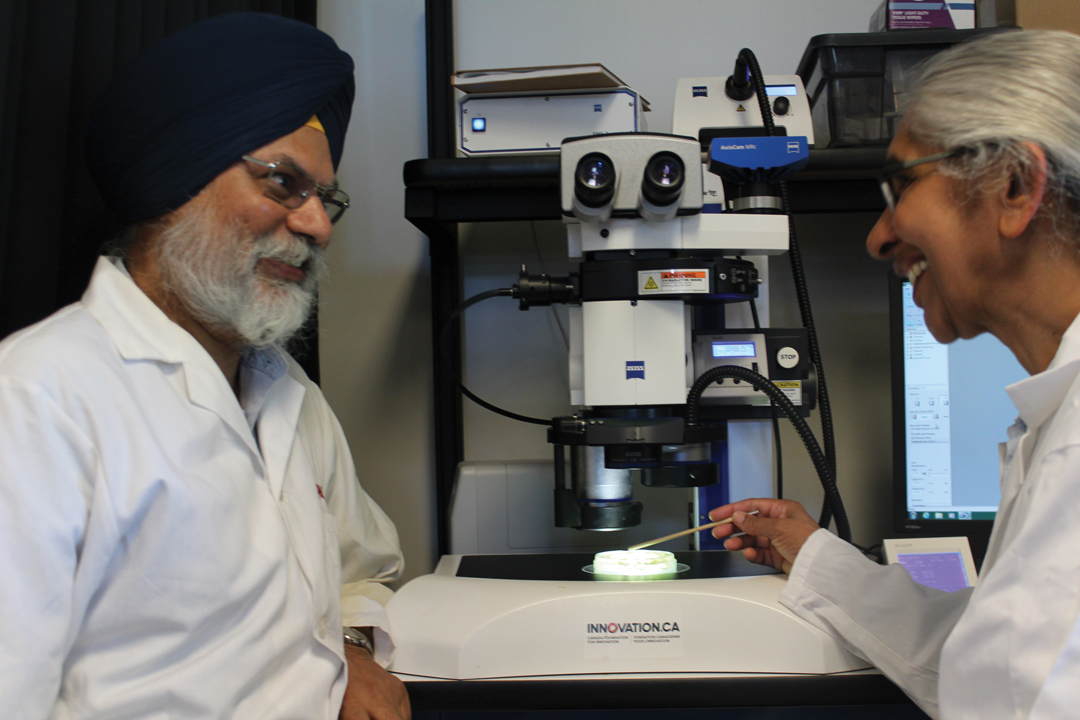TECH PREP A PRIORITY
PROPER MAINTENANCE IS A KEY TO SUCCESS
BY PETER GREDIG
There is nothing worse than having all your iron prepped and ready for action only to be stalled by glitchy electronics.
Almost every late-model seeder and sprayer relies heavily on electronic monitors, controllers and GPS-enabled tools. It’s a double-edged sword: The accuracy and flexibility afforded by programmable electronics is amazing and we wouldn’t want to be without it. The downside is that we are dead in the water if the electronics fail. The expression “you can’t put a wrench on it” is painfully true. Technical fixes during busy times can take longer to resolve than replacing a part or welding up a break.
Like it or not, our equipment is largely driven by technology and this will continue. Getting ready for spring must entail more than greasing and replacing wear parts. The electronic monitors and terminals are like the central nervous system of your equipment. If you talk to reps from technology companies and equipment retailers, they offer similar advice to help avoid delays due to electronic failure.
Tip No. 1 is to start early—as in now. The difference between iron and electronics is that electronic components may go into storage working fine, but you can’t assume they’re good to go come spring. Cold, corrosion and condensation wreak havoc with connections and circuit boards in monitors and terminals. Wherever possible, bring all electronic components in from the cold during storage.
To start prepping for the 2015 growing season, make sure all monitors and GPS equipment are loaded with the most up-to-date software. Most newer monitors and controllers allow you to run a diagnostic protocol that will identify any issues—be sure to take advantage of this after the latest software has been installed.
When it’s time to reinstall components in tractors, sprayers and combines, start an inspection at the battery and work your way back to the components, checking power wires for wear and integrity. Corrosion at battery terminals is a common problem and bad ground connection is one of the most prevalent issues in the spring. If you are not already using di-electric grease and contact cleaner at all wire harness connections, it’s time to start. Do the same inspection on the wire harness from the monitor back to the implement.
Turn on all electronic components and make sure you have power, function and a GPS signal where applicable. For guidance equipment, make sure antennae cables are plugged in—this is a common mistake. Shake the antennae—if there is water inside, it’s a problem waiting to happen. Make a pass out the lane or in the field and then set the guidance to send you back along the same path. Tires should line up with the tracks from the first pass.
Electronic controls are often blamed for performance issues that are actually mechanical. For variable-rate drives, flow controllers and seeder section clutches, make sure they are working and not seized before you blame the controllers.
Data collection and transfer is an important part of new electronics. It’s a good idea to pull up an existing file from last year to make sure the system is working properly. Create a new dummy field/file and push to the appropriate destination so you can confirm data transfer.
Maintaining a relationship with the companies that sold you the technology is critical, especially if you’ve just upgraded or added new technology for the upcoming season. For after-market gear, understand how you access support. Is it via the retailer or through head office? For major equipment manufacturers, know whom you will talk to at the dealership on tech issues.
If you had any problems last season, discuss with tech support to resolve them well before you head to the field. Be sure you have all contact information for tech support loaded into your smartphone so it is super easy to get help when you need it. If you have a tablet, load all relevant websites and user manuals to the device so it is at your fingertips in the cab.
If you want to improve your skills in this area, take advantage of seminars and training resources that are becoming more popular in the off-season.
If all of this is outside your comfort zone, most major manufacturers and after-market technology companies offer pre-season service so that the job gets done properly. Some companies offer a full-service package where, for an annual fee, they will do a pre-season inspection and tune-up and then provide any service required throughout the season.







Comments